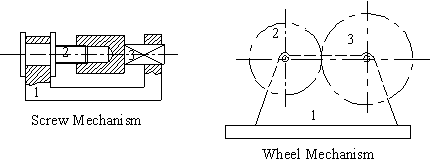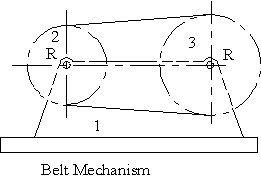1.10. CLASSIFICATION OF MECHANISMS
According to Reuleaux, mechanisms are classified into six basic types:
- Screw Mechanisms
- Wheel mechanisms (gear mechanisms or roller mechanisms)
- Cam mechanisms
- Crank mechanisms (sometimes also called link mechanisms).
- Belt mechanisms
- Ratchet and lock mechanisms (including Geneva drives).
This classification, although it has certain important merits, does not really separate all the mechanisms that we see in practice. We usually have mechanisms that include more than one of the above six basic types. In terms of analysis of certain basic types of mechanisms, the above classification proves to be very useful.
Other classifications may be made concerning the following topological characteristics:
- Degree-of-freedom of space of the mechanism (e.g. spatial, spherical, planar, etc.)
- Degree-of-freedom of the mechanism
- Number of links in the mechanism
- Number of jointsin the mechanism
- Types of joints in the mechanism
As you can see, Reuleaux's classification considers the type of joints (screw, gear, cam, etc.). All these classifications refer to one of the topological characteristics of the mechanisms and all are valid classifications.


